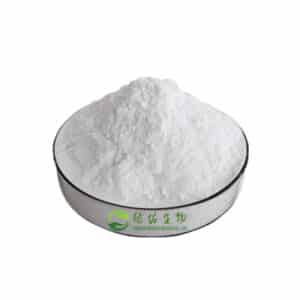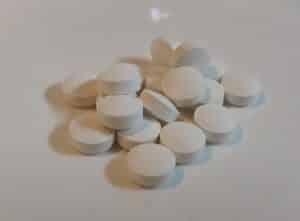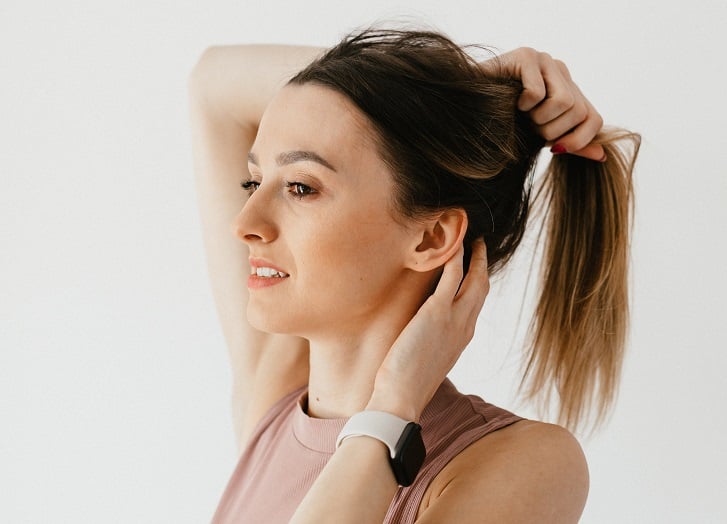Table of Contents
- Is there any Supplement that can help with Trichotillomania?
- Can you use NAC for Trichotillomania?
- Can you use Melatonin for Trichotillomania?
- Is Inositol good for Trichotillomania?
- Can Milk Thistle be used for Trichotillomania?
- A cause for Trichotillomania: Vitamin deficiency?
- What Vitamins to take for Trichotillomania?
- Want to know more?
- Sources
Is there any Supplement that can help with Trichotillomania?
Any of the following can be considered a supplement for trichotillomania, due to the scientific evidence for their effectiveness:
- NAC (N-acetylcysteine)
- Vitamin D
- Inositol
- Melatonin
- Milk Thistle
In the video below, University of Minnesota Medical School researcher Jon Grant has discovered that a common anti-oxidant, widely available as a health food supplement, may help stop the urges of those with trichotillomania, characterized by compulsive hair-pulling.
Can you use NAC for Trichotillomania?
You can use N-acetylcysteine (NAC) for Trichotillomania since it is a precursor to the amino acid cysteine, a glutamate modulator. It may be effective in the pharmacological treatment of Body-Focused Repetitive Behaviors (BFRBs).
Many studies suggest a NAC dose between 1200 to 2400 mg/day for 1-4 months as an effective treatment for Trichotillomania.
This is our recommended NAC supplement (Amazon’s Choice):

Study 1
- Title: Repetitive Behaviors Treated With N-Acetylcysteine: Case Series.
Subject Information
- Number of Subjects: 1.
- Gender: female.
- Health Status: trichotillomania for the last 20 years.
- Age: 31.
Method used
This report describes a case series of a patient in whom trichotillomania was diagnosed at a center in Turkey.
Results
We successfully treated the patient who suffer from previously mentioned disorders with NAC.
Conclusions
Outcome of our cases demonstrates the efficacy of NAC, which is effective and well tolerated on the treatment of obsessive-compulsive disorder-related disorders.
Study 2
- Title: N-Acetylcysteine in the treatment of trichotillomania: remarkable results in two patients.
- Length: 10 weeks.
Subject Information
- Number of Subjects: 2.
- Gender: female.
- Health Status: trichotillomania.
- Age: 30 and 14.
Method used
The patients were prescribed with NAC (1200 mg/d).
Results
Hair pulling behavior subsided within 2 months and 2 weeks of initiating NAC in the first and second patient, respectively. Complete hair regrowth was observed after 4 and 6 months of NAC treatment in the first and second patient, respectively. No side-effects related to NAC were noted.
Conclusion
NAC could be a well-tolerated and effective treatment option for trichotillomania.
Study 3
- Title: N-acetylcysteine, a glutamate modulator, in the treatment of trichotillomania: a double-blind, placebo-controlled study.
- Length: 9 weeks.
Subject Information
- Number of Subjects: 50.
- Gender: 5 male, 45 female.
- Health Status: trichotillomania.
- Mean age: 34.3.
Method used
N-acetylcysteine (dosing range, 1200-2400 mg/d) or placebo was administered for 12 weeks.
Results
Patients assigned to receive N-acetylcysteine had significantly greater reductions in hair-pulling symptoms. 56% of patients “much or very much improved” with N-acetylcysteine use compared with 16% taking placebo. Significant improvement was initially noted after 9 weeks of treatment.
Conclusions
This study, the first to our knowledge that examines the efficacy of a glutamatergic agent in the treatment of trichotillomania, found that N-acetylcysteine demonstrated statistically significant reductions in trichotillomania symptoms. No adverse events occurred in the N-acetylcysteine group, and N-acetylcysteine was well tolerated. Pharmacologic modulation of the glutamate system may prove to be useful in the control of a range of compulsive behaviors.
Study 4
- Title: N-Acetylcysteine for the Treatment of Psychiatric Disorders: A Review of Current Evidence.
Oral N-acetylcysteine is safe and well tolerated without any considerable adverse effects. Current evidence supports its use as an adjunctive therapy clinically for psychiatric conditions, administered concomitantly with existing medications, with a recommended dosage between 2000 and 2400 mg/day.
Study 5
- Title: A review of N-acetylcysteine in the treatment of grooming disorders.
- Length: 1-8 months.
Subject Information
- Health Status: trichotillomania.
Method used
PubMed was searched from inception to October 2017 to identify literature on the use of NAC in the management of trichotillomania.
Results
15 articles were included in this review, which consisted of 10 case reports, one case series, and four randomized controlled trials. Dosing of oral NAC ranged from 450 to 2,400 mg per day, and treatment periods lasted from 1 to 8 months. Side effects were uncommon, mild, and usually gastrointestinal in nature, with severe aggression reported in one child.
Conclusions
While there are multiple reports of the safety and efficacy of NAC in the treatment of grooming disorders, there are currently few randomized controlled trials on this topic, and more research is needed to develop a formal treatment algorithm. While current data should be considered very preliminary, case reports have demonstrated mostly positive results and a lack of significant side effects. A trial of NAC may be a viable option for pathologic grooming disorders, especially in patients who have failed prior psychologic or pharmacologic treatment.
Can you use Melatonin for Trichotillomania?
Melatonin has been used for Trichotillomania, as a biobehavioral treatment to decrease head and mouth touches associated with sleep-related trichotillomania and trichophagia.
Study Information
- Title: Remote treatment of sleep-related trichotillomania and trichophagia.
Subject Information
- Number of Subjects: 1.
- Gender: female.
- Health Status: trichotillomania .
Method used
We used a biobehavioral treatment consisting of melatonin and a standardized bed and wake time to decrease one girl’s head and mouth touches associated with sleep-related trichotillomania and trichophagia. We remotely coached the girl’s caregiver to implement all procedures and monitored response to treatment using a DropCam Pro video camera equipped with night-vision capabilities.
Results
Head and mouth touches decreased, and her sleep pattern improved with the combination of treatment strategies.
Conclusion
We discuss our use of a novel mode of service delivery to treat sleep-related problem behavior.
Is Inositol good for Trichotillomania?
Inositol has been used in studies for Trichotillomania, however, the study found no differences in symptom reductions between inositol and placebo.

Study Information
- Title: A double-blind, placebo-controlled study of inositol in trichotillomania.
- Length: 10 weeks.
Subject Information
- Number of Subjects: 35.
- Gender: female.
- Health Status: trichotillomania.
- Mean age: 28.9.
Method used
The aim of the current study was to determine the efficacy and tolerability of inositol in adults with trichotillomania. Patients with trichotillomania entered a trial to evaluate the safety and efficacy of inositol (dosing ranging from 6 to 18 g/day).
Results
Patients assigned to inositol failed to show significantly greater reductions on primary or secondary outcomes measures compared with placebo. At study endpoint, 42.1% of patients were ‘much or very much improved’ on inositol compared with 35.3% on placebo.
Conclusion
This is the first study assessing the efficacy of inositol in the treatment of trichotillomania, but found no differences in symptom reductions between inositol and placebo. Future studies should examine whether inositol may be beneficial in controlling pulling behavior in a subgroup of individuals with trichotillomania.
Can Milk Thistle be used for Trichotillomania?
Milk Thistle was used for Trichotillomania in a clinical trial. The trial failed to show that milk thistle was more effective than placebo on the main outcome, but there was a significant reduction in the time spent pulling per day.
Study Information
- Title: Milk Thistle Treatment for Children and Adults with Trichotillomania: A Double-Blind, Placebo-Controlled, Crossover Negative Study.
- Length: 12 weeks.
Subject Information
- Number of Subjects: 19.
- Gender: female.
- Health Status: trichotillomania.
- Mean age: 27.9.
Methods used
The study consisted of 6 weeks of milk thistle and 6 weeks of placebo with a 1-week wash-out in between. Dosing of milk thistle ranged from 150 mg twice a day to 300 mg twice a day.
Results
There were no statistically significant treatment type-by-time interactions for the main outcome measure, but significant effects were seen for secondary measures (eg, time spent pulling per day for the past week). From baseline to week 6, there was a significant decrease in severity for the milk thistle group but not in the placebo group.
Conclusions
This trial failed to show that milk thistle was more effective than placebo on the main outcome measure, but milk thistle did demonstrate significant improvements on select secondary outcome measures. These findings may shed light on important neurochemical targets worthy of future investigation.
A cause for Trichotillomania: Vitamin deficiency?
The following study found a possible trigger for trichotillomania: vitamin deficiency, specifically Vitamin D. It can be naturally obtained with regular sunlight exposure, or with a balanced diet that contains foods such as fish, red meat and egg yolks.
However, if you are lacking in any of those, you can take between 1,000–4,000 IU (25–100 mcg) of Vitamin D in supplement form to reach healthy levels.

Study Information
- Title: Trichotillomania Triggered by Vitamin D Deficiency and Resolving Dramatically With Vitamin D Therapy.
Subject Information
- Number of Subjects: 1.
- Gender: female.
- Health Status: trichotillomania.
- Age: 4.
Results
Vitamin D deficiency is thought to be linked to rickets in children and to a range of different diseases in adults, including osteoporosis, osteomalacia, cardiovascular diseases, cancer, dermatological diseases, and psychiatric disorders. We report a case of a 4-year-old girl with trichotillomania triggered by vitamin D deficiency resolving dramatically with vitamin D therapy.
What Vitamins to take for Trichotillomania?
In conclusion, Vitamin D is one of the most important vitamins for trichotillomania treatment and prevention.
Want to know more?
Click the links below to access the individual topic pages:
Sources
This article makes use of information from the U.S. National Library of Medicine under the terms of the Creative Commons Attribution 4.0 International License.
- Grant JE, Odlaug BL, Kim SW. N-acetylcysteine, a glutamate modulator, in the treatment of trichotillomania: a double-blind, placebo-controlled study. Arch Gen Psychiatry. 2009;66(7):756-763. doi:10.1001/archgenpsychiatry.2009.60
- Pereyra AD, Saadabadi A. Trichotillomania. [Updated 2020 Jul 3]. In: StatPearls [Internet]. Treasure Island (FL): StatPearls Publishing; 2020 Jan-. Available from: https://www.ncbi.nlm.nih.gov/books/NBK493186/
- Kiliç F, Keleş S. Repetitive Behaviors Treated With N-Acetylcysteine: Case Series. Clin Neuropharmacol. 2019 Jul/Aug;42(4):139-141. doi: 10.1097/WNF.0000000000000352. PMID: 31232748.
- Özcan D, Seçkin D. N-Acetylcysteine in the treatment of trichotillomania: remarkable results in two patients. J Eur Acad Dermatol Venereol. 2016 Sep;30(9):1606-8. doi: 10.1111/jdv.13690. Epub 2016 May 5. PMID: 27146087.
- Ooi SL, Green R, Pak SC. N-Acetylcysteine for the Treatment of Psychiatric Disorders: A Review of Current Evidence. Biomed Res Int. 2018 Oct 22;2018:2469486. doi: 10.1155/2018/2469486. PMID: 30426004; PMCID: PMC6217900.
- Braun TL, Patel V, DeBord LC, Rosen T. A review of N-acetylcysteine in the treatment of grooming disorders. Int J Dermatol. 2019 Apr;58(4):502-510. doi: 10.1111/ijd.14371. Epub 2019 Jan 22. PMID: 30667049.
- Lichtblau KR, Romani PW, Greer BD, Fisher WW, Bragdon AK. Remote treatment of sleep-related trichotillomania and trichophagia. J Appl Behav Anal. 2018 Apr;51(2):255-262. doi: 10.1002/jaba.442. Epub 2018 Feb 21. PMID: 29468679; PMCID: PMC5996980.
- Akaltun İ. Trichotillomania Triggered by Vitamin D Deficiency and Resolving Dramatically With Vitamin D Therapy. Clin Neuropharmacol. 2019 Jan/Feb;42(1):20-21. doi: 10.1097/WNF.0000000000000317. PMID: 30649027.
- Leppink EW, Redden SA, Grant JE. A double-blind, placebo-controlled study of inositol in trichotillomania. Int Clin Psychopharmacol. 2017 Mar;32(2):107-114. doi: 10.1097/YIC.0000000000000156. PMID: 27824633.
- Grant JE, Redden SA, Chamberlain SR. Milk Thistle Treatment for Children and Adults with Trichotillomania: A Double-Blind, Placebo-Controlled, Crossover Negative Study. J Clin Psychopharmacol. 2019 Mar/Apr;39(2):129-134. doi: 10.1097/JCP.0000000000001005. PMID: 30694881; PMCID: PMC6420084.


